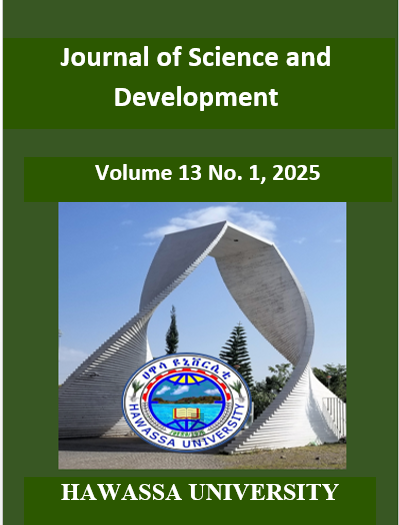Groundwater Recharge and Urban Water balance of Hawassa City, Ethiopia
Keywords:
Curve number, Evapotranspiration, infiltration, Natural recharge, Urban rechargeAbstract
In urban areas groundwater recharge is not only from rainfall, but also from wastewater generated from different water users and water supply leakages. In this study different natural and urban recharge components that exists in the recharge process of Hawassa city, southern Ethiopia was estimated. The natural recharge was evaluated based on primary and secondary data using water balance equation. Runoff was estimated using Soil Conservation Service – Curve Number (SCS-CN) and evapotranspiration using Simplified Surface Energy Balance Index (SSEBI) against annual average precipitation. The urban recharge was evaluated from all water supplied by providers and in-situ groundwater sources, consumptive uses, supply leakages and onsite wastewater. The average rainfall was 1163mm/yr, of which the average runoff depth throughout Hawassa City was 88.63mm/yr. However, the average runoff depth in the developed part of the city was 108.4 mm/yr and in the rural area 76.5 mm/yr. The average actual evapotranspiration in Hawassa city was estimated to be 841.33 mm/yr. Yet, for the developed city of Hawassa it was estimated to be 683.06 mm/yr and for the undeveloped area 933.94 mm/yr. The high rate of evapotranspiration in the rural area is due to high evapotranspiration from wetlands and agricultural land cover types. Therefore, the average natural recharge and urban recharge of the study area were 233.04 mm/yr and 52.7 mm/yr respectively. The specific urban recharge in the developed urban area was estimated to be 142.78 mm/yr, which is a quality degraded water recirculating in the urban aquifers. This result can not only indicate the depth of water recharge, but also the nature of groundwater quality in Hawassa City, and inspire actions to mitigate water quality deterioration and increase storage.
Downloads
Published
Issue
Section
License
Copyright (c) 2025 Getahun Alemu, Awdenegest Moges, Sirak Tekleab

This work is licensed under a Creative Commons Attribution 4.0 International License.
The author(s) of the individual articles remain the copy right of their articles.

